![Best FPV Drones For Beginners [2024]](https://www.thedroneu.com/wp-content/uploads/2024/02/BESTFPVDRONES-1024x768.jpg)
Imagine feeling the wind in your hair as you zip through the air. With FPV drones or First Person View drones, this can become a reality. These mean machines offer an unparalleled, immersive flying experience, letting you see the world exactly as the drone sees it.
Picture yourself wearing FPV goggles as you easily control the drone, feeling like you’re truly in flight. Gone are the days of grainy camera views – with the best FPV drones, you can dive through trees, soar over stunning landscapes, and capture breathtaking footage using some of the best camera drones available.
The good news? FPV technology is more accessible than ever, especially for beginners. Whether you’re searching for the best FPV beginner drones, this guide will help you find the ideal FPV kits. You will also gain insight into the key advantages of FPV flying and get equipped with all the essential knowledge to start your first flight confidently.
What are FPV Drones?
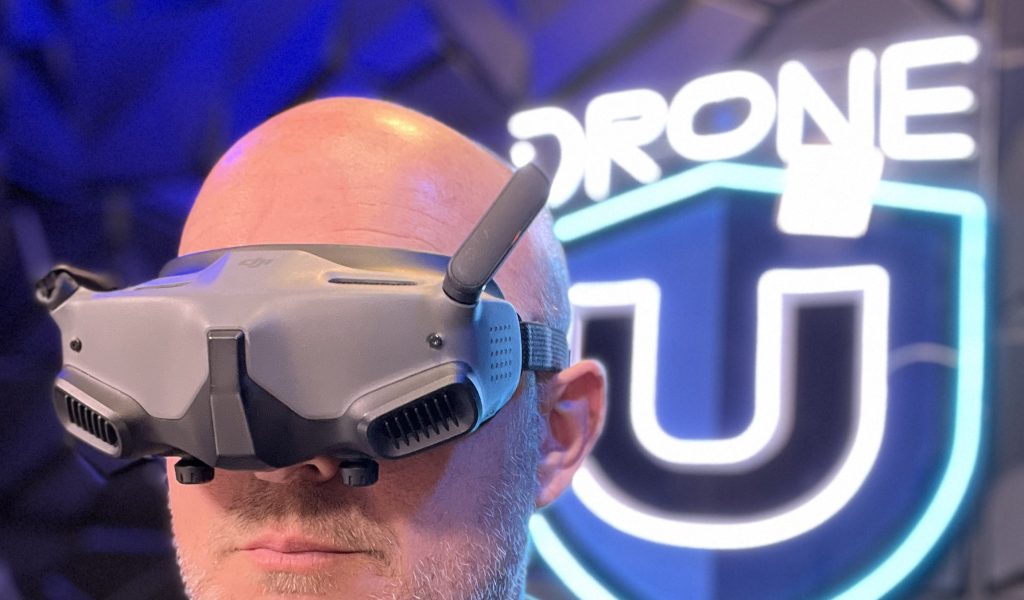
An FPV drone, or First Person View drone, is an unmanned aerial vehicle equipped with a camera that transmits live video directly to the pilot through a headset or screen. This provides the pilot with a first-person perspective as if you’re sitting inside the drone itself. It’s like piloting a tiny spaceship and exploring the world as the drone sees it.
FPV technology has revolutionized the world of drones.
Earlier pilots were restricted to direct visual observation of their drones, which limited their range and visibility. Pilots can now explore greater distances, navigate through narrow spaces, and capture breathtaking aerial footage from novel perspectives with the real-time video feed streaming directly to their goggles.
This immersive experience has not only captured the hearts of hobbyists but also found applications in professional fields like filmmaking, search and rescue, and even agriculture.
Let’s take a closer look at what FPV drones can offer.
FPV Drones vs. Traditional Drones: Detailed Comparison
| Feature | Traditional Drones | FPV Drones | What It Means for You |
| Flight Experience | Standard camera view from a distance, similar to surveillance. | Immersive, in-the-pilot-seat experience through FPV goggles or live screen feed. | Engagement: Feel like you’re truly flying, not just piloting. Great for hobbyists who want more excitement. |
| Control & Maneuverability | Basic controls with limited precision. Ideal for wide, open areas. | Advanced maneuverability with precise controls for racing, stunts, or tight spaces. | Performance: Perfect for aerial videographers, racers, and those who need agility in complex environments. |
| Real-Time Monitoring | Delay in feedback—making it harder to react in time. | Instant, real-time video feed, allowing quick decisions mid-flight. | Reaction Time: Critical for capturing perfect shots, avoiding obstacles, and professional-grade flying. |
| Applications | Primarily for photography and simple aerial footage. | Versatile: Ideal for racing, filmmaking, inspections, and rescue missions. | Flexibility: Great for both recreational fun and high-stakes professional tasks like search-and-rescue. |
| Ease of Use | Beginner-friendly, with easy-to-use controls and stability. | Steeper learning curve, but with more rewarding outcomes for mastery. | Skill Growth: Start with traditional drones and transition to FPV for advanced skills. |
| Price Range | Affordable options available for entry-level users. | Generally higher cost, especially for racing or professional-grade models. | Investment: FPV drones are worth the investment if you’re looking for long-term versatility and performance. |
Having mastered the basics, let’s look at the 5 best FPV drones for beginners.
Best FPV Drones For Beginners
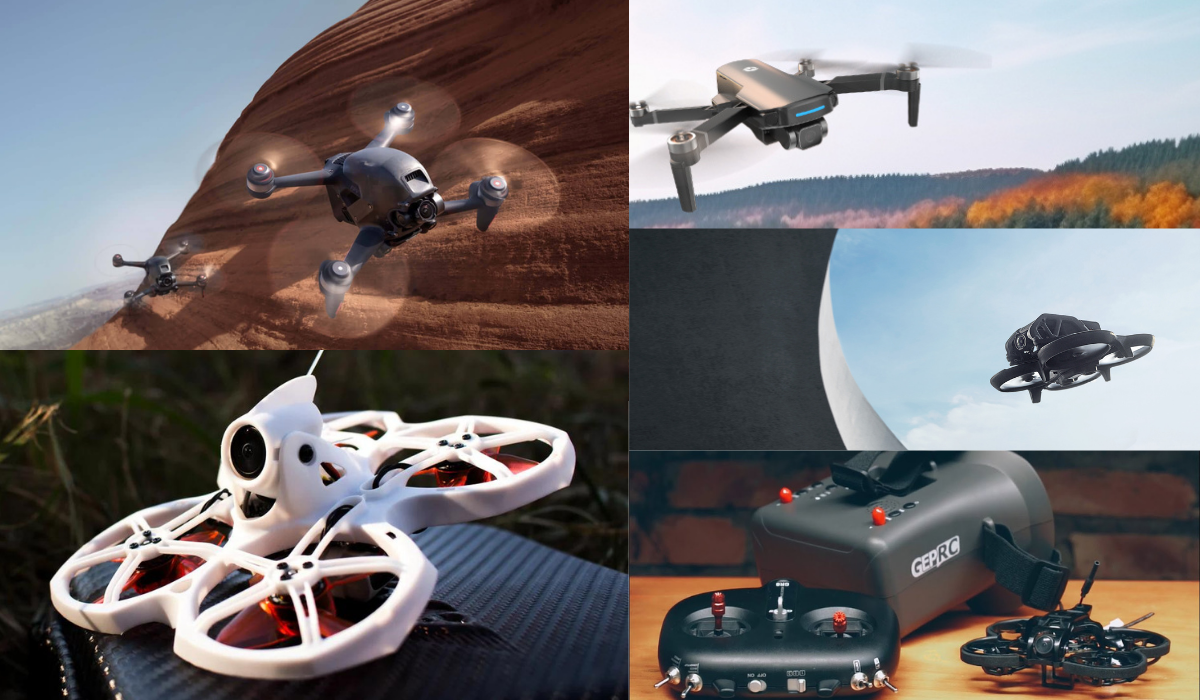
Here are some of the best FPV drones for beginners:
1. DJI FPV Combo
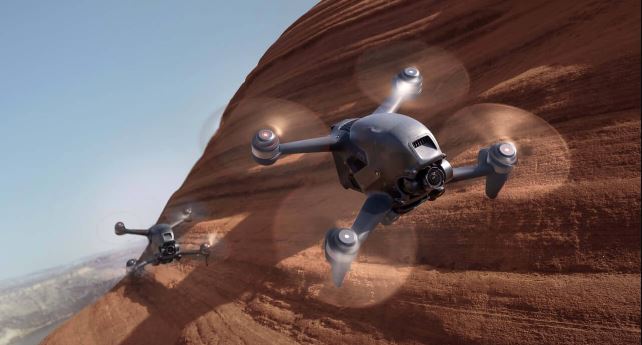 Source: DJI
Source: DJI
The DJI FPV Combo is a top-of-the-line FPV drone that offers an unparalleled flying experience. With its 4K camera and three-axis gimbal, you can capture breathtaking aerial footage with ease. The DJI FPV Combo also includes a dedicated controller with a built-in screen, providing a seamless and user-friendly piloting experience.
This drone is a good option for beginners who want a more traditional FPV experience. It has a powerful flight controller and a high-quality camera with 4K video recording. The DJI FPV also comes with a comfortable headset that gives you a first-person view of the flight.
Features and Specifications
- 4K/60fps super-wide-angle camera
- Three flight modes: Normal, Manual, and Sport
- Maximum transmission range of 10 km
- 20-minute flight time
- GPS and obstacle-sensing
- Intelligent flight modes, including ActiveTrack and QuickShots
Pros and Cons
|
Pros |
Cons |
|
|
2. EMAX Tinyhawk 2 Indoor FPV Racing Drone
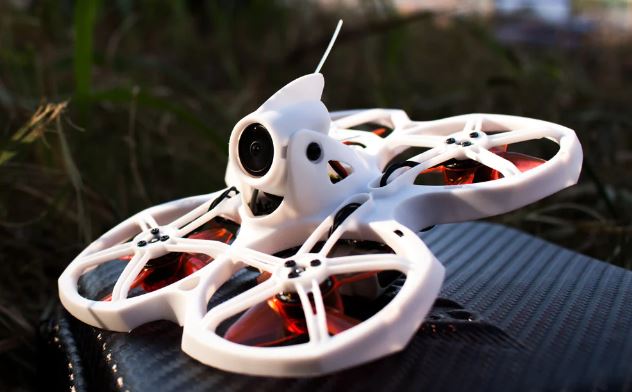 Source: Emax
Source: Emax
For those looking for a more compact and budget-friendly option, the EMAX Tinyhawk 2 is an excellent choice. Don’t let its small size fool you; this drone packs a punch. With its powerful motors and lightweight design, the Tinyhawk 2 is perfect for indoor and outdoor flying. It also features a high-quality camera that allows you to capture and share your FPV adventures with ease.
Features and Specifications
- 600TVL camera for clear video transmission
- A durable and lightweight frame
- 5-minute flight time
- Beginner-friendly flight modes
- Indoor and outdoor flight capability
Pros and Cons
|
Pros |
Cons |
|
|
3. DJI Avata Pro
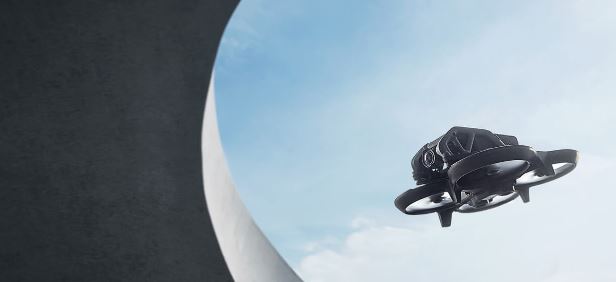 Source: DJI
Source: DJI
If you’re looking for a professional-grade FPV drone with advanced features, the DJI Avata Pro is the answer. This drone is equipped with a powerful 6K camera and boasts an impressive flight time of up to 35 minutes.
This cinewhoop drone is perfect for beginners who want a smooth and stable flight experience. It has a ducted propeller design that protects the blades from obstacles, making it less crash-prone than traditional FPV drones. The Avata Pro also boasts a high-quality camera with 4K video recording and RockSteady 2.0 stabilization, ensuring your footage looks stunning. However, it’s on the pricier side.
Features and Specifications
- 1-inch CMOS sensor for 4K video recording
- 3-axis stabilized gimbal for smooth footage
- Maximum flight time of 27 minutes
- Advanced obstacle sensing and avoidance system
- Intelligent flight modes, including ActiveTrack and Waypoints
Pros and Cons
|
Pros |
Cons |
|
|
4. Holy Stone HS360S
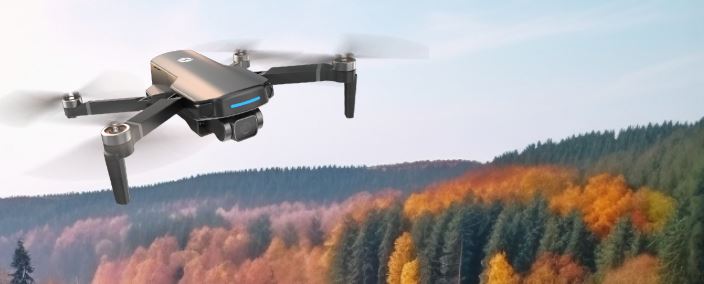 Source: HolyStone
Source: HolyStone
This beginner-friendly drone is a great option for those who want to learn the basics of FPV flying without spending a lot of money. It has a built-in flight controller that makes it easy to fly, and it comes with a headset and goggles.
The HS360S also features a 1080p camera, allowing you to capture high-quality video and photos. Its responsive flight performance and durable construction make it a perfect drone for both beginners and experienced pilots.
Features and Specifications
- 1080p HD camera for high-quality video and photo capture
- Altitude hold function for stable flight
- Headless mode for easy orientation
- One-key takeoff and landing
- 10-minute flight time
Pros and Cons
|
Pros |
Cons |
|
|
5. GEPRC TinyGo 4K
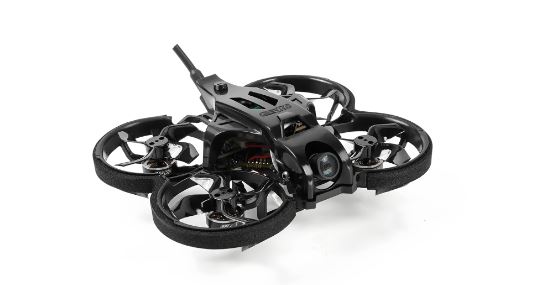 Source: GEPRC
Source: GEPRC
This mini drone is a great option for beginners who want something portable and affordable.
Last but not least, the GEPRC TinyGo 4K is a compact and powerful FPV drone suitable for beginners. It’s packed with features like a 4K camera, a gyroscope for stabilized flight, and a long flight time of up to 25 minutes.
The TinyGo 4K also comes with a range of intelligent flight modes, making it easy for beginners to capture professional-looking aerial footage. With its sleek design and impressive performance, this drone is an excellent choice for aspiring FPV pilots.
Features and Specifications
- 4K Ultra HD camera for crisp video recording
- Lightweight design for easy transportation
- Three flight modes: Beginner, Intermediate, and Expert
- Altitude hold and headless mode for stability and easy control
- 15-minute flight time
Pros and Cons
|
Pros |
Cons |
|
|
Top 5 FPV Drones for Beginners: Quick Comparison
| Drone Model | Best For | Camera | Flight Time | Key Features | Price Range |
| DJI FPV Combo | High-quality aerial footage | 4K/60fps | 20 min | GPS, obstacle sensing, long range (10 km) | High |
| EMAX Tinyhawk 2 | Indoor/outdoor practice | 600TVL | 5 min | Compact, durable, beginner modes | Low |
| DJI Avata Pro | Professional-grade filming | 4K | 27 min | Obstacle sensing, intelligent flight modes | High |
| Holy Stone HS360S | Budget-friendly option | 1080p | 10 min | Altitude hold, one-key takeoff/landing | Low |
| GEPRC TinyGo 4K | Portable 4K filming | 4K Ultra HD | 15 min | Compact, altitude hold, headless mode | Medium |
Note: Price ranges are relative comparisons (Low, Medium, High) based on the drone market as of 2024.
FPV Drones Flying: Important Definitions and Concepts
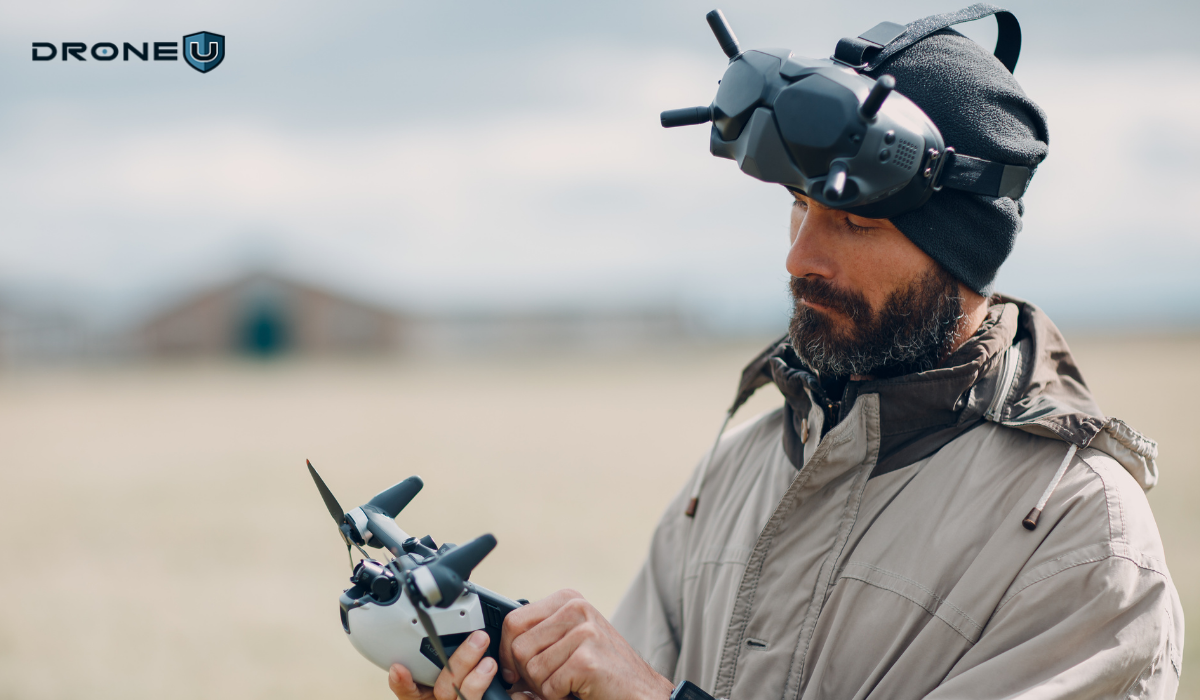
To fully understand FPV drones, it’s important to familiarize yourself with these key terms:
First-Person View (FPV)
FPV refers to the experience of seeing the world from a drone’s perspective in real time. It is achieved using FPV goggles or a screen to receive the live video feed from the drone’s camera.
Brushless Motors vs. Brushed Motors
Brushless motors are more efficient and durable compared to brushed motors. They provide better control and increased power, making them ideal for FPV drones.
Flight Controllers and Their Functions
Flight controllers are the brains of the drone, controlling its stability, navigation, and flight modes. They provide crucial data to the pilot and ensure a smooth and safe flying experience.
FPV Goggles and Screens
FPV goggles provide an immersive flying experience, allowing you to see the live video feed more realistically. Screens, on the other hand, offer a larger view for those who prefer not to wear goggles.
Radio Transmitters and Receivers
Radio transmitters and receivers are used to control the drone’s flight. The transmitter sends commands to the receiver, which then instructs the drone on how to maneuver.
LiPo Batteries and Safety Precautions
LiPo (Lithium Polymer) batteries are commonly used in FPV drones for their high energy density. Safety precautions such as proper charging, storage, and handling are important to prevent accidents and ensure battery longevity.
Having explained the benefits and key terms, it is time to understand their limitations.
Limitations of FPV Drones
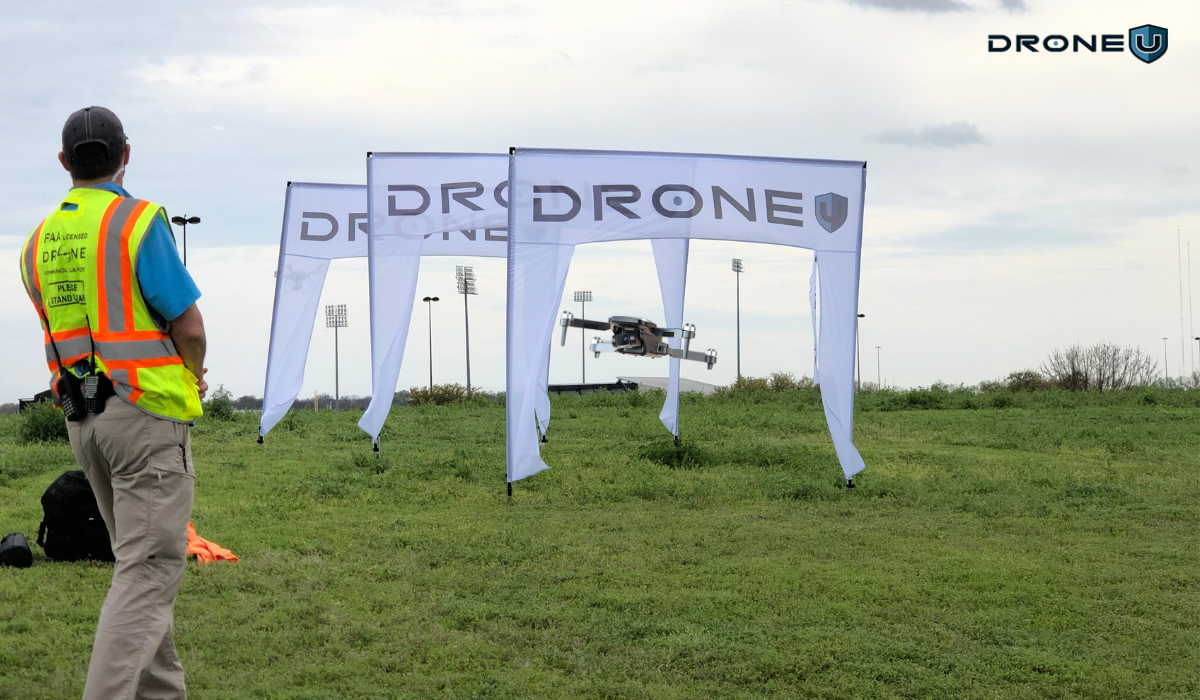
While FPV drones offer incredible benefits, they do have some limitations:
1. Short Flight Time and Battery Life
Most FPV drones have a relatively short flight time due to their compact size and high power consumption. This can limit the amount of time you have in the air before needing to recharge or swap out batteries.
2. Limited Range and Signal Interference
FPV drones typically have a limited range compared to traditional camera drones. Signal interference can also affect the video transmission, leading to static or loss of connection. This can restrict the distance you can fly and the quality of the video feed.
3. Learning Curve for Beginners
FPV drones require some learning and practice to master. The first-person view can be disorienting for beginners, and the controls may take some time to get used to. However, with dedication and practice, beginners can quickly become proficient in flying FPV drones.
4. Cost Considerations and Maintenance
FPV drones can be more expensive compared to traditional camera drones due to their advanced features and specialized equipment. Additionally, they require regular maintenance and the occasional replacement of parts, which can add to the overall cost of ownership.
Choosing the Right FPV Drone for You
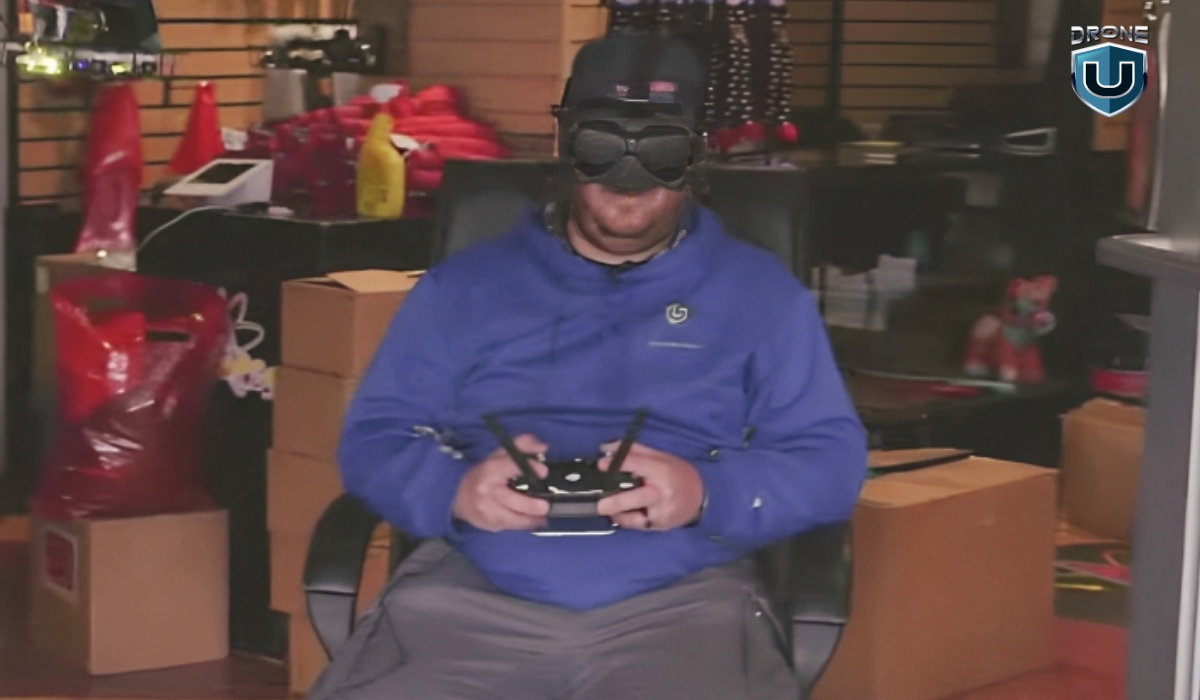
When selecting an FPV drone, consider the following factors:
1. Assessing Your Skill Level and Goals
Evaluate your flying experience and identify your goals. Are you a complete beginner looking for a training drone, or do you have some flying experience and want to take your skills to the next level? Understanding your skill level will help you select a drone that is suitable for your needs.
2. Considering Budget and Cost of Accessories
Set a budget for your drone and consider the additional costs of accessories such as spare batteries, FPV goggles, and replacement parts. It’s important to factor in these costs to ensure you have a complete and functional setup.
3. Checking Availability and Customer Support
Research the availability of the drone and its accessories, as well as the reputation of the manufacturer. Check for customer reviews and the availability of customer support to ensure you have a reliable and trusted brand.
Conclusion
With so many great options on this list, there’s a perfect FPV drone waiting to take you on an unforgettable aerial adventure.
I know you can’t wait to take to the skies with your brand-new FPV drone. Remember to fly safely, respect drone regulations, and embrace the learning process.
Frequently Asked Questions
1. What does FPV mean for a drone?
FPV stands for First Person View. It refers to a technology that allows you to view the drone’s flight from a first-person perspective using a video feed transmitted from a camera on board the drone. This video feed is viewed through a headset or goggles, making you feel as if you are piloting the drone yourself. FPV drones offer an exhilarating experience, giving you a real sense of flight and control.
2. Are FPV drones legal in the US?
Yes, FPV drones are legal in the United States. However, certain rules and regulations must be followed to ensure safe and responsible use. The Federal Aviation Administration (FAA) has specific guidelines that govern the operation of drones, including FPV drones.
Some of the regulations for flying FPV drones in the US include:
- Registering your drone with the FAA if it weighs over 0.55 pounds (250 grams).
- Flying your drone only within visual line of sight.
- Avoid flying near airports and restricted airspace.
- Following community-based safety guidelines and local laws.
By adhering to these regulations, you can enjoy flying your FPV drone without any legal issues.
3. How much does an FPV drone cost?
The cost of an FPV drone can vary greatly depending on the features and specifications you are looking for. As a beginner, it is recommended to start with a more affordable option before investing in more advanced models.
Entry-level FPV drones designed for beginners typically range from $100 to $300. These drones usually come with a compact and durable design, basic flight features, and a lower-quality camera. While they may not offer the same level of performance as higher-end models, they are perfect for learning the basics of FPV flying.
On the other hand, if you’re looking for more advanced features and better video quality, the price can go up to $1000 or more. These drones often come equipped with obstacle avoidance systems, advanced flight modes, and high-resolution cameras for capturing stunning aerial footage.
Ultimately, the cost of an FPV drone will depend on your budget and requirements. It’s important to do thorough research and read reviews to find the best option that suits your needs.
4. Are FPV drones good for beginners?
FPV drones can be a great option for beginners who are eager to try their hand at drone flying. While they may have a steeper learning curve compared to traditional drones, the immersive experience they offer is highly rewarding.
Here are a few reasons why FPV drones are good for beginners:
- Improved control: FPV drones allow you to see the drone’s flight path in real time, giving you a better sense of control. This can help beginners to practice and master their piloting skills more effectively.
- Engaging experience: Flying an FPV drone is like being in the pilot’s seat, experiencing the thrill of flying firsthand. This immersive experience can make learning to fly a drone more exciting and enjoyable.
- Skill development: FPV flying requires a higher level of skill compared to traditional line-of-sight flying. By starting with an FPV drone, beginners can develop their situational awareness, hand-eye coordination, and decision-making abilities, which are valuable skills for any drone pilot.
Beginners need to start with a beginner-friendly FPV drone and take the time to practice flying in open and safe areas. As their skills improve, they can gradually upgrade to more advanced models and explore the full potential of FPV flying.







Add Your Comment